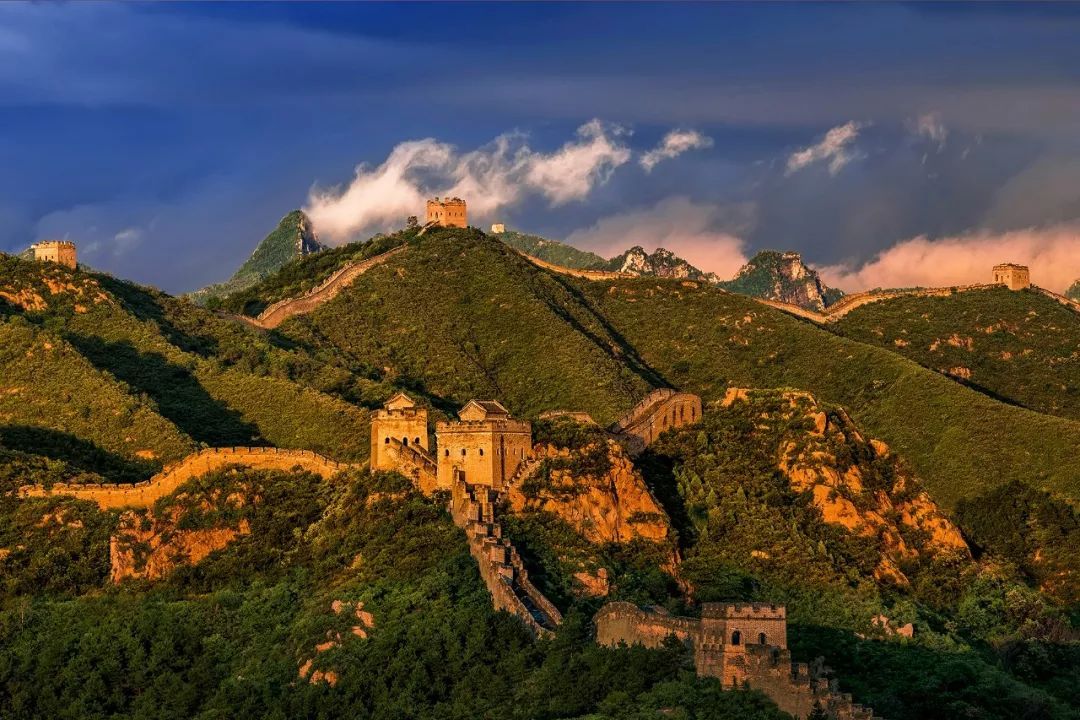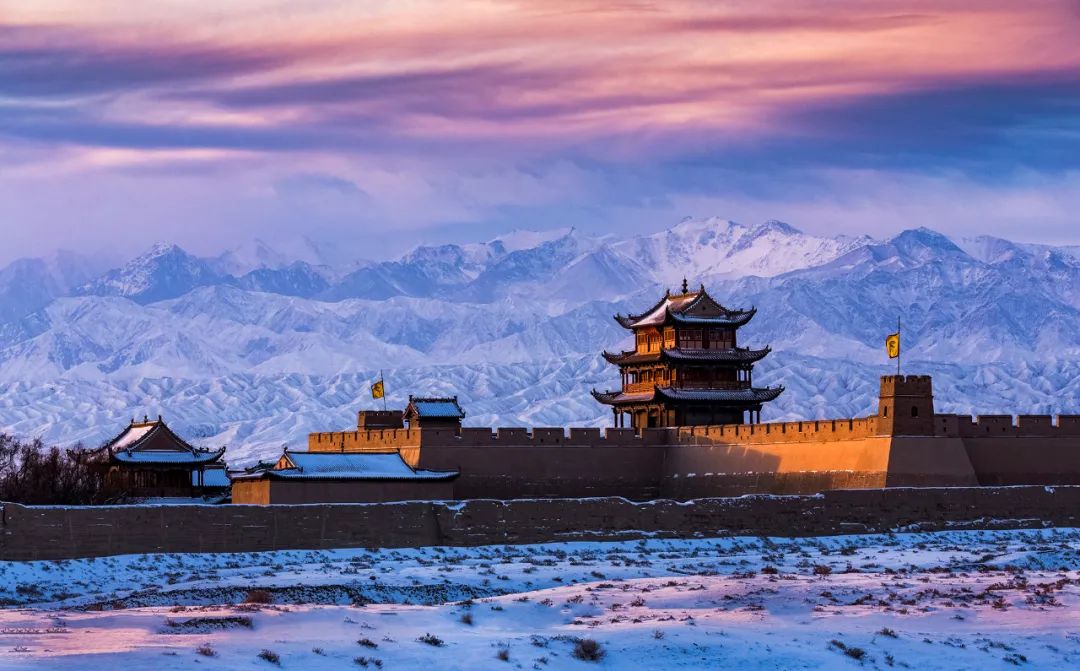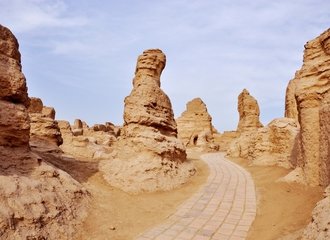Great Wall travel of China: Everything you need to know
The Great Wall, one of the world-famous wonders, is the only man-made artificial structure on earth that can be seen from the moon and listed as a world cultural heritage site in 1987. It is a perfect example of the integration of architecture and landscape winding up and down across the barren Gobi or deserts, vast grasslands, lofty mountains, steep cliffs, and stunning rivers and lakes of northern China. As an absolute world miracle with the longest construction time and the largest amount of engineering in the world, it had been continuously built for more than 2000 years by different dynasties of ancient China since it was built during the Spring and Autumn and Warring States Period. While, among them, the Great Wall built by the Ming dynasty (also called Ming Great Wall) is the most well-known section of the Great Wall.
Although named the 'wall', it is an integrated military defense project composed of majestic and solid walls, countless watchtowers, signal towers, barriers, troop barracks, garrison stations, fortresses, and paths served as a transportation corridor, together forming an impassable line for thousands of years, to prevent the nomadic tribes from invading south and protect the economic and cultural development of the ancient Chinese states. It has extremely high tourism value and historical and cultural significance, which can be considered to be the best entry point for foreigners to understand Chinese history, Chinese culture, and the Chinese nation, playing an irreplaceable role for the world to understand China. It is a must-see site when foreign travelers make a China tour.


Basic facts of the Great Wall
The main project of the Great Wall is a tall wall that stretches for thousands of miles, most of which are built on the highest point of the mountain. The winding and endless mountains are drawn along the ridge with a clear outline, creating a leaping and majestic dragon, thus making it a symbol of the Chinese nation.
- Location: North China, East Asia.
- The total length of the Great Wall: 21,196.18 kilometers.
- The total length of the Ming Great Wall: 8851.8 kilometers, made up of 6,259.6 km sections of actual wall, 359.7 kilometers of trenches, and 2232.5 kilometers of natural defensive barriers such as hills and rivers.
- East end: Hushan, Dandong, Liaoning.
- West end: Jiayuguan, Gansu.
- Coverage: Mainly 15 provinces and regions including Hebei, Beijing, Tianjin, Shanxi, Shaanxi, Gansu, Inner Mongolia, Heilongjiang, Jilin, Liaoning, Shandong, Henan, Qinghai, Ningxia, and Xinjiang.

Best time to visit the Great Wall
Generally Speaking, April, May, September, and October are the best months to explore the wonders of the Great Wall, as the weather of these months is warm and stable, and the scenery is bright and colorful. However, a trip to the Great Wall is suitable all year round, because different seasons have different beautiful scenery.
In Spring (March to May), everything revived, the flowers and trees at the foot of the Great Wall sprouted. In Summer (June to August), the weather is generally hot, but the scenery of the Great Wall is still beautiful in good shape. Autumn is the most beautiful time of the Great Wall, the air is high and refreshing, the mountains are full of autumn colors, making it one of the best seasons to visit the Great Wall. Even though it is cold and dry in winter, it is another good time to visit the Great Wall with the least visitors and beautiful snow scenes.


Which sections of the Great Wall are worth to visit
According to the official survey, Gansu, Inner Mongolia, Hebei, Beijing, etc. are the top regions boasting the most relics of the Great Wall. However, due to the heavily weathering and erosion in the wild northwest, the Great Wall of those regions has been severely damaged, only the walls in east China are kept in good condition. Among them, Beijing owns the quintessence of the Great Wall of the Ming Dynasty, having the best-preserved and most-visited sections.
After careful restoration, there are many sections of the Great Wall worthy of a visit: such as Badaling, Jinshanling, Simatai, Mutianyu, Juyongguan, Jiankou, Gubeikou, and Huanghuacheng Great Walls in Beijing, Shanhaiguan in Hebei, Jiayuguan in Gansu, etc. Travelers can not only do a day's regular sightseeing at one of its carefully restored sections but also spend a few days exploring the wilderness of the Great Wall by trekking.


Great Walls in Beijing
Badaling Great Wall
The best preserved and most representative section of the Great Wall of the Ming Dynasty, in addition, it is the first section of the Great Wall that was opened to tourists. However, it is crowded with domestic and international tourists throughout the whole year, hence, it is not really recommended to visit this section of the Great Wall.
- Admission: CN¥ 40 per person (April to October); CN¥ 35 per person (November to the following March); students and the elderly with valid certificates are CN¥ 25 per person.
- Opening hours: 6:30-19:00 (April to October); 7:00-18:00 (November to the following March).
- Recommended sightseeing time: No less than 3 hours.
Mutianyu Great Wall
Another beautiful section of the Great Wall with 90% vegetation coverage and unique architectural style, offering magnificent views of the green mountains, as well as well-retained walls. More importantly, compared to the crowds of the Badaling Great Wall, there are fewer people here!
- Admission: CN¥ 45 per person from April to October; CN¥ 40 per person from November to the following March; students with a valid certificate are CN¥ 25 per person.
- Opening hours: 8:00-17:00 (April to October); 08:30-16:00 (November to the following March).
- Recommended sightseeing time: Over 3 hours.

Jiankou Great Wall
The most famous wild Great Wall in Beijing with a total length of 10 kilometers at the altitude of 1,141 meters, it is one of the most popular places for travelers to hike and rock climb in the wild for adventures. Backed by steep mountains, this section of the Great Wall is steep and full of desolate and innocent natural beauty.
- Admission: No tickets are required for the Great Wall. If entering from Xizhazi Village, a fee of CN¥ 20 per person for Xizhazi Ecological Sightseeing Park is required to pay.
- Opening hours: All day.
- Recommended sightseeing time: 1-3 hours.
Juyongguan Great Wall
A famous ancient pass on the Great Wall of China was listed as one of the "Eight Scenic Spots of Beijing" in the Ming Dynasty, and the ancient Great Wall that retains the original appearance of the Ming Great Wall, with ruins and broken walls everywhere. Here you can enjoy a harmonious scenery of overlapping mountains, frequent streams, and lush vegetation.
- Admission: CN¥ 40 per person from April to October; CN¥ 35 per person from November to the following March;
- Opening hours: 8:00-17:00 (April to October); 8:30-16:00 (November to the following March).
- Recommended sightseeing time: 1-3 hours.

Jinshanling Great Wall
Compared with the Great Walls in other parts of Beijing, the Jinshanling Great Wall still maintains its original appearance and has a simple and pure feeling. There are not many tourists here, the Great Wall is trendy and steep, and the views on both sides are very broad and spectacular, making it a paradise for photographers. It is popular to shoot the sunrise and sunset, and the clouds and rainbows after the rains in summer and autumn there.
- Admission: Tickets for adults are CN¥ 65 per person from March 16 to November 15; CN¥ 55 per person for adults from November 16 to the following March 15;
- Opening hours: 6:00-19:00 (The opening hours are adjusted according to the sunrise and sunset times, but no overnight stays in the scenic area).
- Recommended sightseeing time: A whole day.
Huanghuacheng Water Great Wall
Known as the Great Wall in the water, it is a leisure resort known for its uniqueness and beauty, integrating mountains and forests, clear waters, and the ancient Great Wall. Hovering on the mountain ridge and surrounding the shore of Haoming Lake, it is with beautiful and spectacular scenery. The lake water naturally disconnects the three sections of the Great Wall, forming a peculiar landscape where the Great Wall has no ancient walls.
- Admission: Tickets for adults are CN¥ 45 per person, students and the elderly with valid certificates are half-price CN¥ 22 per person.
- Coupon A: Ticket + cruise round trip: CN¥ 75 per person.
- Opening hours: 8:00-16:30 (April to October);8:00-17:00 (November to the next March).
- Recommended sightseeing time: 3-4 hours.

Simatai Great Wall
Rated by the British Times as "the top of the 25 scenic spots in the world that should not be missed" in 2012, it is the only ancient Great Wall in China that retains the original appearance of the Ming Great Wall, with the features of "dangerous, dense, strange, ingenious, and complete". Compared with the Badaling Great Wall, it is more authentic with ruined walls. It is such a wonderful place to enjoy the red leaves of every Autumn.
- Admission: CN¥ 40 per person (reservation required for independent travel); tickets for tour guides are CN¥ 100 per person.
- Open area: 1-10 floors of the east section of the Simatai Reservoir.
- Opening hours:
- Please make an appointment at least one day in advance and reach the foot of the Great Wall in batches according to the specified time. Three batches per day (10:00, 12:00, 14:00).
- Wintertime (November-March of the following year): 8:00-17:30. Great Wall clearing time is 18:00.
- Daylight Saving Time (April to October): 8:00-18:00, Great Wall clearing time is 20:00.
- Recommended sightseeing time: Longer than 3 hours.
Gubeikou Great Wall
What makes the Gubeikou Great Wall most attractive is that the Great Wall here has a lot of cultural charm because of the historical town of Gubeikou. It is divided into two parts: Panlong Mountain and Wohu Mountain, one winding and the other steep. The Great Wall here connects with Jinshanling and Simatai, offering stunning treks, attracting many outdoor enthusiasts often coming here to cross this route.
- Admission: CN¥ 45 per person.
- Opening hours: All day.
- Recommended sightseeing time: One day.


Shanhaiguan Great Wall in Hebei
Shanhaiguan Great Wall, belonging to Shanhaiguan, Qinhuangdao City, Hebei Province, is where the Great Wall enters the sea, which once was considered the easternmost starting point of the Great Wall of Ming Dynasty and the first pass of the Great Wall of China. With a total length of 26 kilometers, it mainly includes sections such as the Laolongtou, the South Wing, Guancheng, the North Wing, Jiaoshan, Sandaoguan, and Jiumenkou Great Wall, making it become a famous tourist destination with many cultural and natural landscapes worth visiting and admiring. Among them, Laolongtou Great Wall is the end of the Great Wall into the sea, known as the "Soul of China".
| Name | Admission | Opening Hours | Recommended sightseeing time |
|---|---|---|---|
| Shanhaiguan Pass (the First Pass in the World) |
CN¥ 60 per person | 08:00-17:00 | 1-3 hours |
| Jiaoshan Great Wall | CN¥ 30 per person | 08:00-17:00 | 1-3 hours |
| Laolongtou Great Wall | CN¥ 50 per person (May to Oct.); CN¥ 20 per person (Nov. to the following Apr.) |
07:00-18:00 (May to October); 07:30-17:30 (Nov. to the next Apr.) |
1-3 hours |
Tips: The opening hours of the Laolongtou and Shanhaiguan Pass - the First Pass in the World (July and August) are 06:30-19:00.


Jiayuguan Great Wall in Gansu
Built in the Ming Dynasty, Jiayuguan is the first pass at the western end of the Great Wall of the Ming Dynasty, as well as a traffic fortress on the ancient "Silk Road" located at the western end of the Hexi Corridor in Gansu Province. It has dangerous terrain and has been a battleground for military strategists since ancient times. It echoes with Shanhaiguan, thousands of miles away, and is famous all over the world.
- Admission: CN¥ 110 per person (May to October), CN¥ 100 per person (November to the following April).
- Opening hours: 08:30-20:00.
- Recommended sightseeing time: 1-3 hours.


Hiking options at the Great Wall
For those seeking adventures, the Great Wall of China is one of the best places in China to challenge yourself, especially the sections of the Great Wall close to Beijing. Apart from the well-restored sections of the Great Wall, there are also many wild/unrestored sections of the Great Wall around Beijing switching back and forth along with steep mountain passes. After thousands of years of baptism, they are still beautiful and attract countless outdoor enthusiasts to challenge. Among them, the route from Jinshanling to Simatai West and the route from Jiankou to Mutianyu are the most popular and wonderful routes for the day treks from Beijing. The multiple-day trek with camping is also available on the half-preserved or wild sections of the Great Wall.


How to plan your Great Wall visit
For travelers who tour Beijing or even tour China, the Great Wall is one of the top highlights on their must-see list. It is a perfect day trip for travelers based in Beijing, they can choose any one of the beautiful sections of the Great Wall which can best suit their needs and interests. For those traveling with family, the more accessible Mutianyu section might be their top choice. For active and confident hikers, a venture to Jinshanling or one of the sections of the wild Great Wall, such as Jiankou, should be the best choice.
No matter if you are visiting the Great Wall of China on a layover or during a longer trip, it is highly advisable to spend at least two or three hours exploring the ancient structure and its surrounding beauty. As all the popular sections of the Great Wall in Beijing are about 56KM to 160KM away from the downtown, travelers need to take a public bus or metro to Dongzhimen Station first, then take a public sightseeing bus to the Great Wall in about 1-2 hours.
For those planning a trip to the eastern end of the Great Wall into the sea, Shanhaiguan, thanks to the high-speed train, which greatly shortens the train riding into only about 2-2.5 hours from Beijing, making it possible to complete the trip to Shanghaiguan in one day. It is also possible for you to stay at Shanhaiguan city for a longer time to explore more wonders there.

As the first pass at the western end of the Great Wall of the Ming Dynasty, as well as a traffic fortress on the ancient "Silk Road" located 6 kilometers southwest of Jiayuguan City, between Zhangye and Dunhuang, we usually highly recommend our clients to tour to Jiayuguan as a part of their gorgeous China Silk Road tour.
To be more convenient and have a better experience, it’s recommended to book a tour through a local China travel agency to include a car with a driver and a tour guide. The tour guide will help you to understand the Great Wall in-depth by sharing more historical and cultural information, and a car with a driver is the best way to maximize your time.
Interested in adding the Great Wall to your China private tours, please do not hesitate to contact us directly to get more details and plan your remarkable trip!

Accommodation and dining options near the Great Wall
Accommodation:
As the best-preserved and most-popular Great Walls are usually not far away from the city area, thus, most tourists usually choose to have a day trip to one of their favorable sections of the Great Wall, and return to the city area for a more comfortable sleep. However, for those that a day’s sightseeing at the Great Wall is not enough, there are local guesthouses or local budget hotels near the Great Wall available to stay, 5-star hotels with luxury amenities even available close to some sections of the Great Wall, such as Gubeikou Great Wall. For those wanting to camp at the Great Wall, it is possible for them to choose to camp on Gubeikou Great Wall or one of the wild sections of the Great Wall near Beijing.
Dining:
As one of the wonders of the world, there are many must-see sections of the Great Wall. However, no restaurants can be found on the Great Wall, some can be found at the foot of the Great Wall offering im-notable food at a high cost. In the peak seasons from March to November, there are many local restaurants available providing food for dining, especially Chinese cuisine including stir-fried dishes, stockpot dishes, Beijing Roast Duck, etc. While during the low seasons, some restaurants will be closed, particularly the restaurants near the less-visited sections of the Great Wall, such as Jiankou Great Wall, Simatai Great Wall, Huanghuacheng Great Wall, etc. For those who hike on the Great Wall, it is highly recommended to prepare some easy-pack food prior to departure.





















